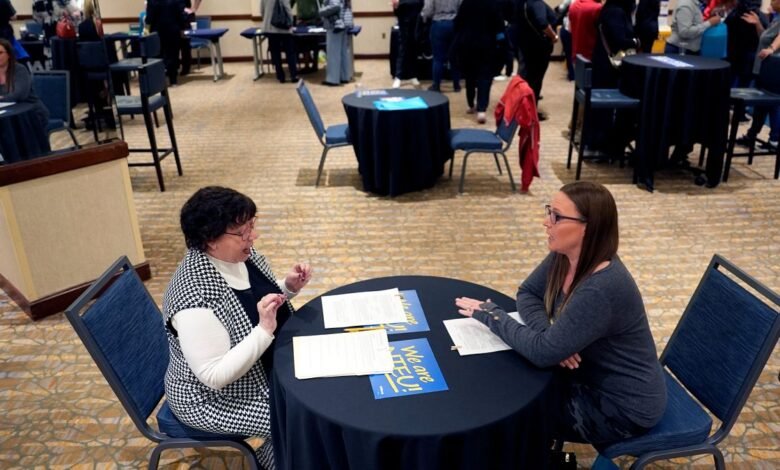US added 228,000 jobs in March despite Donald Trump’s federal cuts

US employers added a surprising 228,000 jobs last month, as the American labour market continues to show resilience as President Donald Trump wages trade wars, purges federal workers and deports immigrants working in the United States illegally. The unemployment rate ticked up to 4.2%.
The hiring numbers were up from 117,000 in February and were nearly double the 130,000 that economists had expected. Labour Department revisions shaved 48,000 jobs off January and February payrolls.
Workers’ average hourly earnings rose 0.3% from February, about what economists had expected. Compared to a year earlier, hourly pay was up 3.8%, a bit lower than the 4% that had been forecast and nearing the 3.5% year-over-year gains that are seen as consistent with the Federal Reserve’s 2% annual inflation target.
Healthcare companies added almost 54,000 jobs and restaurants and bars nearly 30,000 as the job market bounced back from bitter winter weather in January and February. The federal government lost 4,000, a sign that Elon Musk’s purge of the federal workforce may only be starting to show up in the data.
New US tariffs and increasing deportations could push inflation up again
President Donald Trump’s trade wars- including the sweeping “Liberation Day’’ import taxes he announced Wednesday- threaten to drive up prices, disrupt commerce and invite retaliatory tariffs from America’s trading partners.
Another threat comes from the president’s promise to deport millions of immigrants who are working in the United States illegally. In the past several years, those workers have eased labour shortages and helped the economy keep growing. If they’re deported or frightened out of the job market, companies could have to cut back on what they do or increase wages and raise prices, potentially feeding inflation.
The job market has cooled from the red-hot hiring days of 2021-2023. Employers added 151,000 jobs in February and 125,000 in January. Not bad but down from monthly averages of 168,000 last year, 216,000 in 2023, 380,000 in 2022 and a record 603,000 in 2021 as the economy surged back from COVID-19 lockdowns.
“The market needed today’s number,” said Seema Shah, Chief Global Strategist, Principal Asset Management. “Everyone knows that economic weakness is coming, but at least we can be reassured that the labour market was robust coming into this policy-driven shock and therefore, the slowdown should not be overly steep.”
The economy has been remarkably durable in the face high interest rates.
Could the US economy face a recession in the short-term?
In 2022 and 2023, the Federal Reserve raised its benchmark interest rate 11 times to combat inflation. Economists expected the higher borrowing costs to tip the United States into recession. But they didn’t. Consumers kept spending, employers kept hiring and the economy kept growing.
Inflation came down- allowing the Fed to cut rates three times last year. But then progress against inflation stalled, forcing the Fed to put off more rate cuts this year.
Now there are increasing worries about the health of the economy. The University of Michigan’s consumer sentiment survey last month showed that two-thirds of American consumers expected unemployment to rise over the next year- the highest reading in 16 years.
“The US economy is in good shape at the start of the second quarter, but the ongoing trade war has increased the risk of near-term recession dramatically,” Ershang Liang of PNC Economics wrote in a commentary Thursday.
Thomas Simons, chief economist at Jefferies, says the March numbers may be inflated by seasonal adjustments and end up getting revised lower in coming months. “After we see more data, and eventually a number of revisions, this period of time in the labour market will probably look quite a bit worse than it does now,” he wrote in a commentary Thursday.
Source link



